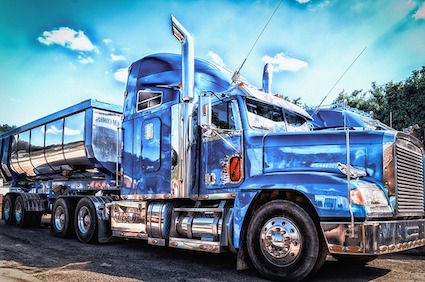We still don’t have autonomous vehicles roaring down highways and roaming free along interstates. The technology is almost there, but there are still too many variables to make self-driving vehicles completely safe: humans being one of the biggest variables. The software isn’t perfect, either, but we’re getting closer and closer to seeing autonomous vehicles on roads. This would be great for morning commutes, but shipping and logistics companies are far more eager to see self-driving trucks on the road than your average consumer. One company has a quick fix solution that could help get autonomous trucks on the road faster.
A long time coming
We think of driverless vehicles as a fairly new concept. However, experiments with remotely operating vehicles using radio signals began in the 1920s with The American Wonder. This isn’t what we think of with driverless cars and autonomous vehicles today, but it was the initial proof of concept that spurred research and development over few decades.
2009 marks the beginning of the modern era in autonomous vehicles when Google began developing a self-driving car. Today, more than a dozen companies are working on driverless car systems, including several major automotive manufacturers. While we’re getting close to seeing truly autonomous vehicles on the road, we’re not quite there yet.
There have been some impressive displays self-driving vehicle technology.
- Delphi Automotive completed nine-day cross-country road trip spanning 3,400 miles from New York city to San Francisco with an autonomous vehicle. A team of researchers took turns sitting behind the wheel for safety reasons.
- An Otto self-driving truck carted a truckload of beer along the Colorado Front Range. 51,744 cans of Budweiser beer made the 120-mile ride from Ft. Collins, CO to Colorado Springs, CO while the driver relaxed in the sleeping berth.
- China plans to have 10% of all vehicles fully autonomous by 2030.
There have also been some major disasters with autonomous vehicle technology.
- In March 2018, a self-driving Uber hit and killed a pedestrian walking across the road in Tempe, Arizona.
- In May 2016, a Tesla owner died when his vehicle careened into a big rig trailer while in Autopilot mode.
- Earlier this year in May 2019, another accident involving a Tesla’s Autopilot system and a semi truck resulted in a fatality.
Self-driving trucks would be a big win for industry
It makes sense to automate trucking jobs. Trucking means sedentary living, exposure to dangerous situations, and it’s a high-stress occupation. Truckers are at a higher risk for obesity, smoking, low physical activity, and high blood pressure. Of course, the money saving on wages is a big intensive for logistics companies to automate trucking lines. It would be a game changer for distribution and industry. It might even help crack the last-mile delivery code.
There are a few obstacles to overcome with automating semi trucks, however.
People get distracted while driving, they cross into the wrong lane, there are pedestrians, tire blowouts, unsecured cargo falling from trucks, animals crossing into the road, inclement weather, low visibility, and many other unexpected things that require quick thinking, fast reflexes, and a reliable foot on the brake pedal.
And again, the software isn’t perfect. It isn’t possible to get a sedan or compact car to be 100% safe on the road. You can imagine the difficulties with a 80,000-pound semi truck full of cargo hurtling 70 miles per hour down the freeway.
One company has a possible solution for self-driving trucks, at least in the short term.
Driving two trucks with one driver
Peloton — a Silicon Valley-based autonomous trucking company — believes the answer to autonomous trucking is having a driverless truck follow a truck with a human driver. Instead of focusing on the, as of yet, unattainable goal of a fully autonomous truck, Peloton’s solution is to have an autonomous truck follow behind and mimic the movements of a truck that’s operated by a human.
It’s a Level 4 autonomous system, meaning that the truck drives entirely on its own, that skirts current limitations in driverless technology by using people. This first truck is controlled like a normal truck. The driver pushes the gas, hits the brakes, and uses the turn signal like he would in any other truck. The second truck is linked to the lead truck’s steering, braking, and acceleration, and it simply follows the commands.
Is it a self-driving truck? Absolutely. Is it cheating? Maybe just a little bit. Either way, this quick fix allows trucking companies to avoid technological limitations and essentially double the productivity and profit by having a single driver in charge of two trucks.
The problem with quick fixes…
Like all quick fixes it’s not a permanent solution. It might take care of the issue for a little while, but it’s not something you can rely on long-term. Don’t trust a quick fix for your Indramat motion control system. Fix the problem the right way the first time. Call 479-422-0390 for Indramat factory repair and all of your Indramat service needs.
